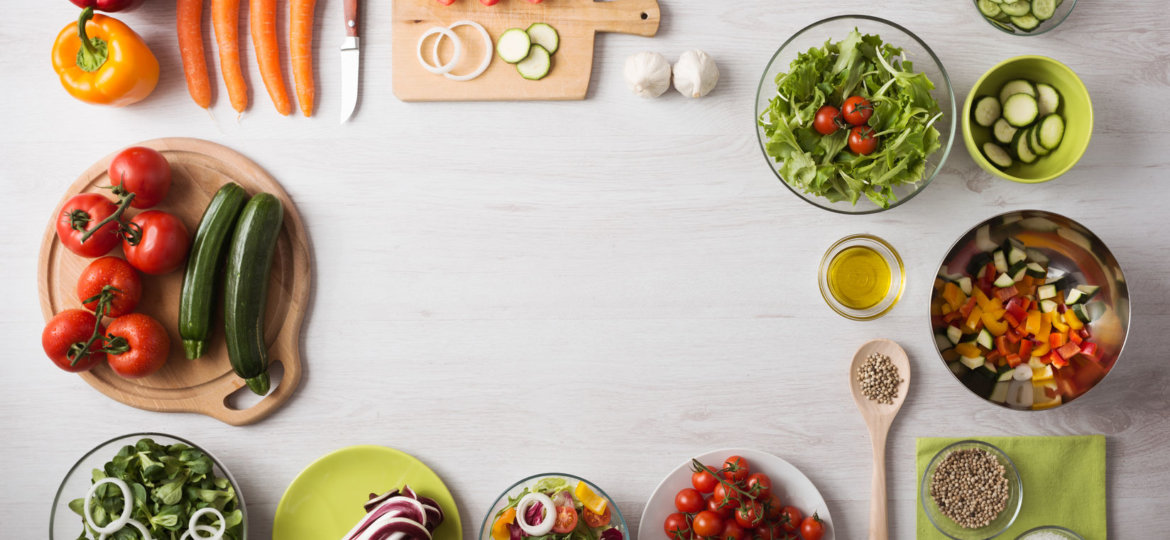
If you’re looking for a way to save time, money, eat healthier and squeeze workouts, meal times and cooking into an already busy schedule, let meal prep come to your rescue. Spending a few extra minutes in advance of the week to prep meals for the week saves you time, money and sanity while helping you eat healthier, too. Sign you up? We knew you’d be down!
Life goes something like this: When time runs short, we reach for something quick to make meals happen — and often these convenient options aren’t the healthiest. But, what if you had something convenient, ready-to-eat and utterly homemade on hand?! Herein lies the beauty (and necessity) of meal prep.
Here we’ll introduce some prep basics to get you going. Let these ingredients, tips and tricks be your schedule saviour!
To get on board with weekly or even sporadic meal prep, you’re going to need a few essential ingredients and some tips to pull it all together.
Here’s what to do:
1. CHECK YOUR CALENDAR
Before you get cooking, you need to know how many breakfasts, lunches and dinners you’ll be eating at home this week. Factor in things like dates, business meetings, travel or other engagements, this way, you’ll avoid food waste — and time waste of prepping too much! In general, most prepped ingredients last four days to a week. If you’re freezing meals or components, these items can last up to 11 months depending on the item.
2.PREP YOUR PANTRY
Do you have any ingredients in the pantry or fridge you need or want to use? Start by looking/thinking about what ingredients you want to use and work your way around a menu utilising them. Again, this cuts down on food waste and keeps your storage spaces clean and tidy.
3. MAKE A MENU
Once you know how many meals you need and which ingredients you already have to work with, you can plan meals around these factors. Some other things to keep in mind:
-Make your meals nutritionally balanced: Make sure you have macros — fats, proteins, carbohydrates — and fresh vegetables at each meal. Great protein options are chicken, fish, beef, eggs and Greek yoghurt. For fat, think about using high-quality sources such as olive oil, avocado or nuts. When considering carbs, keep them complex instead of refined. That means brown rice, quinoa and whole-grain pasta or bread.
-Be creative: It’s true that prepping different ingredients for each night of the week takes more time, but eating the same things over and over again can be tedious, so think about how you can use favourite ingredients in different ways. For example, you can cut beef sirloin into cubes for stew, into thin strips for stir-fries or fajitas or grill it straight up as a steak. Vegetables are versatile, too — carrots, broccoli, capsicum or green beans can be eaten raw with dips, tossed into salads or added to stir-fries.
– Use those leftovers: You don’t have to eat the same thing every day just because you take some time to make larger batches once a week. One easy way to commit to meal prep on a small scale is to make double portions for dinner and take the extras for lunch the next day. Make a grocery list. Then head to the store.
– Keep it simple: The simpler, the better, the more likely you are to stick with your meal prep routine. Sometimes the best way to do this is not to commit to specific recipes, and instead, aim to make a few components that can be combined in different ways. For example, grill chicken, steam rice, roast sweet potatoes, Brussels sprouts, beets and carrots, and mix up a dressing. All of these components can be combined in myriad ways to make healthy, fresh meals. (Rice bowl! Chicken salad! Roasted potato bowl!)
4. GET TO THE STORE
You’ve got your menu, now get shopping! Get home, spend a few solid hours in the kitchen and create some meals for the week.
Be smart, and use these tips:
– Cook veggies in big batches & divide between serving size containers
– Again, cook meat in big batches & separate
– Use a universal spice to get a quick flavour in without having to spend hours marinating
Try out this month recipe – make a big patch & have on hand for next weeks lunch or dinner.
